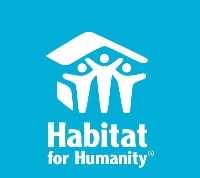The National Alliance to End Homelessness Releases State of Homelessness in America
National and state by state counts show recession-driven increase in homelessness unemployment, housing cost burden, doubling up shown as indicators of homelessness
Washington, DC – February 3, 2011 – (RealEstateRama) — The recession contributed to an increase in overall homelessness from 2008 to 2009, according to the National Alliance to End Homelessness, and family households experienced the largest percentage increase. The increases, coupled with worsening economic and demographic indicators of homelessness, paint an austere picture of The State of Homelessness in America.
The State of Homelessness in America, the first report of its kind, investigates the economic indicators and demographic drivers of homelessness, examining how eight factors contribute to increased risk of homelessness among vulnerable populations. The Alliance examined four economic indicators (unemployment, foreclosure, income, and severe housing cost burden) and four demographic drivers (aging out of foster care, release from incarceration, doubling up, and lack of insurance).
Major Findings:
- The nation’s homeless population increased by approximately 3 percent from 2008 to 2009. The largest percentage increase among subpopulations was in the number of family households experiencing homelessness, which increased by over 4 percent. In Mississippi, the number of people in homeless families increased by 260 percent.
- The doubled up population increased by 12 percent to more than 6 million people from 2008 to 2009. In Rhode Island the number increased by 90 percent; in South Dakota the number more than doubled.
- Nearly three-quarters of all U.S. households with incomes below the federal poverty line spent over 50 percent of monthly household income on rent. Forty states saw an increase in the number of poor households experiencing severe housing cost burden from 2008 to 2009.
- California, Florida, and Nevada – states known to have been disproportionately impacted by the recent housing crisis – have high rates of homelessness and high rates of unemployment, foreclosure, housing cost burden, lack of insurance, and doubling up.
- People in doubled up living situations, released from incarceration, and aged out of foster care are twice as likely to experience homelessness than the average poor person; these populations are twenty times as likely to experience homelessness as the average American.
“These findings project what depressed wages, stagnant unemployment, unrelenting housing cost burden, and the lagging pace of economic recovery really means: increases in homelessness and heightened risk of homelessness for more and more Americans,” said Nan Roman, president of the Alliance. “As the new Congress and the Administration work to revitalize the American economy, we ask that they include homelessness interventions in the recovery strategy – clearly, as these data show, they are an urgent part of the solution.”
The State of Homelessness is the first in an annual series. For more information and access to the full report, please visit the Alliance website.
Contact:
Catherine An
202-942-8297,















